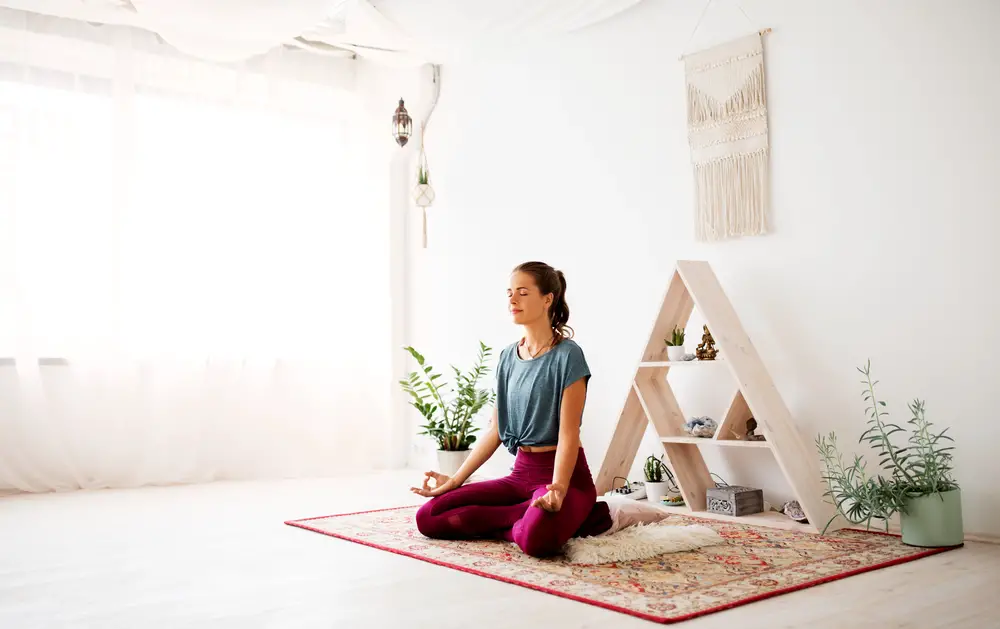15 Practical Steps on How to Reset Yourself
15 Practical Steps on How to Reset Yourself

Feeling overwhelmed is a shared experience that we can address with practical and intentional steps. Over time, in my practice as a licensed therapist, I’ve learned to help my clients and reset myself by focusing on goals, environmental influences, and how I interact with technology. We can transform routines and achieve a more balanced life by embracing mindfulness and self-care.
Engaging with the world mindfully fosters personal growth and satisfaction. This may involve curating who we spend time with or dedicating ourselves to learning new skills. As we progress, regular reflection ensures we remain aligned with our intentions and allows us to make necessary adjustments.
Key Takeaways
- Set clear goals and adjust your environment for positivity.
- Balance digital exposure and ensure quality sleep.
- Practice mindfulness, manage time, and seek help when needed.
Step 1: Define Your Goals

Setting clear goals helps guide actions and measure progress. Goals should be specific, realistic, and tied to personal values for effective alignment.
When I set intentions, I aim for them to be explicit and attainable. I break down larger ambitions into smaller steps to make the process manageable. For example, instead of saying, “I want to get fit,” I might commit to exercising three times a week.
It helps to use the SMART criteria:
- Specific: Define the goal clearly.
- Measurable: Ensure progress can be tracked.
- Achievable: Set realistic expectations.
- Relevant: Align with broader life goals.
- Time-bound: Include a timeframe for completion.
Each criterion supports clarity and feasibility, reducing the risk of feeling overwhelmed or discouraged.
Aligning Goals with Values
Aligning goals with personal values is crucial for lasting motivation. I consider what matters deeply to me before committing to any objective.
I reflect on my core values and ensure my goals support these principles. This alignment prevents drifting into activities that don’t resonate with my beliefs. Creating a visual reminder, such as a vision board or a list of values and corresponding goals, keeps me focused and inspired.
Staying true to our values brings us satisfaction and enhances our perseverance during challenging times.
Step 2: Evaluate Your Current State

I must pause, consider signs of burnout, and evaluate the harmony in my life. These reflections guide me to reset and recharge effectively.
Recognizing Burnout
Burnout signals are crucial to identify early. Pay attention to these signs: feeling exhausted, disconnected, or noticing a dip in productivity. Fatigue isn’t just physical; mental exhaustion creeps in quietly and affects all facets of life.
Experiencing reduced performance, irritability, or a loss of enthusiasm points to burnout. These hints suggest the need for a reset. By recognizing these signs, we can better prepare to address issues directly before they escalate.
Assessing Life Balance
Balance in life acts as a foundation for well-being. Evaluate aspects such as work, personal hobbies, and relationships to determine their alignment. For instance, spending less time at work might improve our personal lives.
Similarly, neglecting personal interests or relationships indicates imbalance. I use tools like journals or mind maps to visualize my life areas. From there, adjustments become more evident, allowing me to focus on nurturing underdeveloped areas.
By focusing on equilibrium, we actively work towards maintaining a fulfilling life.
Step 3: Declutter Your Physical Space

When it comes to organizing my physical space, I start by decluttering. I remove items I don’t use, creating more room for important activities. Storage solutions like boxes and shelves help keep everything in its place. I label these storage options clearly for easy access.
Natural light plays a crucial role in my office and home, so I keep windows unobstructed and let sunlight brighten the space for my clients and myself. Adding a few plants can further enhance the atmosphere by introducing fresh air and a touch of nature. I make these small adjustments regularly to sustain a harmonious environment.
Creating a Positive Environment
I focus on organizing my physical space effectively to create a positive environment. A tidy space nurtures mindfulness and reduces stress, making daily tasks more enjoyable and productive.
Step 4: Digital Detox
Managing digital exposure involves conscious decisions about screen time and notification settings to enhance focus and reduce stress. We can navigate the digital world with greater control and clarity by making informed choices.
Reducing Screen Time
Start by acknowledging the hours spent on various devices. Keeping a log helps me pinpoint the most time-consuming activities. Once identified, I set realistic goals to cut down on non-essential usage. Screen time apps are excellent tools for this purpose, offering insights and limitations on app usage.
Another approach is to designate specific tech-free zones and times. For instance, meals and bedtime can become screen-free sanctuaries.
Managing Digital Notifications
I manage the flow of notifications I receive throughout the day. Reviewing app settings is a good starting point; I turn off unnecessary alerts, keeping only what’s truly important. Notifications can be grouped to receive them in batches instead of constant interruptions.
For more crucial communications, I allow alerts in priority mode. In settings, many devices offer a do-not-disturb mode during specific times, enhancing concentration and reducing stress. Fine-tuning these settings can dramatically change how we interact with technology, fostering a more serene environment.
Step 5: Establish a Sleep Routine
Quality sleep is essential for resetting both body and mind. I focus on creating an environment conducive to restful sleep every night. Darkness is crucial; I use blackout curtains to keep the room dark.
A consistent sleep schedule helps synchronize our internal clock. I aim to go to bed and wake up at the same time daily, even on weekends.
Temperature plays a role in sleep quality. Keeping the room cool promotes better rest. I adjust my thermostat or fan to achieve a comfortable sleeping temperature.
Limiting exposure to electronic devices before bedtime makes a big difference. I avoid screens at least an hour before sleeping to reduce blue light exposure.
Exercise can improve sleep quality, but timing is vital. I try exercising earlier in the day to avoid disrupting sleep patterns.
To further promote relaxation, I practice a bedtime routine. Simple activities like reading or a warm bath help signal my body that it’s time to unwind.
Mindful breathing exercises or meditation can also be helpful. I find these calming techniques effective in reducing pre-sleep stress.
Nutrition affects sleep quality. I avoid heavy meals and caffeinated drinks late in the evening, opting for lighter snacks if necessary.
Bed comfort is crucial. I invest in a supportive mattress and pillows that suit my sleeping style, ensuring maximum nighttime comfort.
Creating a restful sleep environment and adopting these practices helps achieve quality sleep, which is vital for resetting effectively.
Step 6: Practice Mindfulness and Meditation

Incorporating mindfulness can significantly enhance life satisfaction. Techniques like meditation and conscious breathing help focus the mind and alleviate stress.
Meditation and Breathing Techniques
Meditation requires finding a comfortable sitting spot, closing our eyes, and taking deep breaths. To stay present, I focus on my breath or a mantra. This practice can help reduce anxiety and improve concentration.
For breathing practices, I use techniques such as the 4-7-8 method. I inhale for four seconds, hold my breath for seven, and exhale for eight. This rhythmic pattern helps calm my nervous system and promotes relaxation. These practices can be adapted to fit into short breaks throughout my day.
Step 7: Engage in Physical Activity
I’ve found that regular exercise is a crucial part of a healthy lifestyle. It boosts energy levels, improves mood, and enhances physical fitness. To keep exercise consistent, I schedule workouts in my calendar just as I would any necessary appointment. Strength training and cardiovascular exercises—such as jogging, cycling, or swimming—form the core of my routine.
Incorporating flexibility exercises like yoga or stretching helps prevent injuries and improves joint health. I find activities I enjoy, turning exercise into a pleasurable experience rather than a chore. This makes it easier to stick with long-term, and I often notice an improvement in my overall well-being.
Step 8: Nourish Your Body with Healthy Food

I’ve found that a nutritious diet is a foundational element in resetting myself. Eating well not only fuels my body but also sharpens my mind.
Stay Hydrated:
Water is crucial for optimal body function. I ensure I drink enough throughout the day, aiming for about eight glasses. I sometimes add lemon or cucumber slices for added flavor.
Balanced Meals:
When planning meals, focus on balance. I include a source of protein, healthy fats, and carbohydrates on my plate to keep my diet well-rounded.
Mindful Eating:
Pay attention to hunger cues and eat slowly. This approach helps me enjoy meals and prevents overeating.
Following these steps, you can support your body’s needs and enhance your well-being.
Step 9: Cultivate Positive Relationships
Fostering a positive social environment is essential for personal growth. I focus on connecting with people who add value to my life. This means engaging with those who inspire, support, and challenge me in healthy ways.
I periodically evaluate my social circles. I ask myself: “Who energizes me? Who drains me?” This reflection helps me prioritize relationships that boost my well-being.
Steps to curate a social circle:
- Identify supportive people: Spend more time with those who listen and offer constructive feedback.
- Set boundaries: Limit interactions with individuals who cause stress or negativity.
- Seek diverse perspectives: Engage with people from different backgrounds to broaden horizons.
I also ensure that I nurture these positive relationships. Scheduling regular meetups or even simple check-ins can strengthen these bonds.
By focusing on quality over quantity, I maintain a supportive network.
Don’t forget to stay open to new connections while also surrounding yourself with a core group that shares your values and goals. This way, you can create a supportive environment that encourages personal growth.
Step 10: Learn Something New

To acquire new skills, identify your interests and create a detailed learning plan. It requires focus, dedication, and understanding of how to approach your educational journey.
Identifying Interests
To start, I delve into what genuinely captures my attention. This means looking at hobbies or tasks that I naturally gravitate towards. I often list activities or topics I want to explore further.
Reflecting on past experiences can help pinpoint what drives my curiosity. Online surveys and personality assessments are practical tools for gaining insights. Seeking feedback from peers or mentors may highlight interests I had yet to consider.
Remember to consider your interests to make your learning more enjoyable and effective. Connecting to what you already like will boost your motivation and commitment.
Creating a Learning Plan
Once I’ve identified my interests, I create a structured plan to learn the associated skills. This involves setting clear, achievable goals that guide my learning path and provide a sense of direction.
Breaking down goals into smaller tasks can make the learning process manageable. I consider using resources such as online courses, books, or workshops to help structure my learning.
Scheduling regular, dedicated time for skill acquisition is crucial. I often set aside time daily or weekly, ensuring consistent progress. This structured approach helps me stay organized and focused.
Remember to track your achievements and reflect on your progress. Doing so will boost your confidence and highlight areas needing refinement. It’s important to be flexible and adjust your plan as you learn more about the subject.
Step 11: Practice Gratitude
Cultivating a sense of gratitude really helps to brighten your mindset! Each day, I set aside time to list three things I’m thankful for. This simple act shifts my focus from what I lack to what I have. Cultivating gratitude boosts mood and improves well-being.
Reflection is crucial for helping reset and regain focus. I dedicate time to contemplate my thoughts and actions. This process offers valuable insights into behavior patterns, enabling me to make informed decisions.
I maintain a journal to organize my thoughts. Here, I record daily reflections and moments of gratitude. It serves as a personal record of my journey, providing a snapshot of my growth over time.
Incorporating gratitude and reflection into your routine requires dedication. By establishing consistent habits, you cultivate a more positive and resilient mindset. This ongoing practice helps you reset and realign with your goals.
Step 12: Set Boundaries
Ensure a balance between work and personal time. I allocate specific periods in my calendar for work tasks and ensure I have enough downtime. This prevents burnout and promotes productivity.
Leisure activities provide a healthy counterbalance to my work life. I enjoy hobbies and spending time with friends and family to recharge. Setting boundaries, such as turning off work emails outside office hours, helps me maintain this balance. Through mindful scheduling, I achieve a fulfilling work-life harmony.
Implementing Time Management
Effective time management can significantly enhance productivity and ensure a smoother, more organized daily routine. I can maximize my efficiency by focusing on critical aspects such as task prioritization and minimizing procrastination.
Step 13: Embrace Solitude
Focusing on self-care involves establishing a consistent routine and effectively balancing work and leisure. Both are crucial in maintaining emotional and physical well-being.
Developing a Self-Care Routine
I prioritize activities that rejuvenate me. Small steps, like a daily morning walk, help clear my mind. Setting aside time, even just a few minutes is vital for relaxation and reflection. Regular exercise, nutritious meals, and quality sleep form the core of my self-care.
Consistency in my routine is essential. I list activities that bring me joy and incorporate them into my day. Whether reading, meditation, or hobbies, each activity contributes to my well-being. Keeping a journal is beneficial for tracking my progress and ensuring I stay on track.
Seeking Professional Help
Engaging with a trained professional can provide new perspectives and tools to help manage challenges. Professional help comes in various forms, such as counseling or psychiatric support.
Step 14: Create a Routine and Stick to It

When I prioritize tasks, I begin by identifying what needs immediate attention. Creating a list helps me visualize tasks. I find using a matrix—breaking tasks into categories based on urgency and importance—effective. This lets me focus on critical tasks without overlooking less urgent ones.
I also allocate time for each activity, efficiently balancing my workload. Setting deadlines helps maintain this balance. Utilizing tools like calendars and apps is beneficial for reminders. This organized approach reduces stress and enhances productivity.
Avoiding Procrastination
To combat procrastination, I first recognize habits that lead to delay. Identifying distractions, such as social media or unimportant tasks, helps eliminate them. I establish specific times to focus without interruptions.
Using techniques like the Pomodoro Technique, which involves working in short, concentrated bursts, can keep me engaged. Breaking larger tasks into smaller, manageable parts makes them less daunting, encouraging me to start promptly.
Since motivation can waver, I set clear, realistic goals. Recognizing progress as I go—whether through a checklist or a tracking app—maintains momentum. This structured approach effectively fosters discipline and minimizes procrastination.
Step 15: Reflect and Adjust
Reflecting on progress involves careful attention to documenting experiences and reassessing goals. By keeping a journal, I can track my journey. Regular goal adjustments ensure that my targets remain relevant and attainable.
Keeping a Journal
A journal provides a structured way to document thoughts, achievements, and challenges. Daily or weekly entries help maintain consistency. Recording both small wins and significant milestones is beneficial. A journal encourages self-awareness, offering insights into habits and reactions that might go unnoticed.
A simple table format to log my activities—such as date, activity, and feelings—can create clarity. This visual format makes patterns more apparent. Additionally, it allows me to identify areas of improvement and highlight strengths. Reflecting on past entries fosters a more profound comprehension of my personal and professional development.
Adjusting Goals as Needed
My goals should evolve in response to my journey. When keeping track of progress, I periodically reassess my goals. I can decide if an adjustment is necessary by evaluating current circumstances and acknowledging achievements.
I utilize SMART criteria—specific, Measurable, Achievable, Relevant, and Time-bound—to refine my goals. This framework ensures that each target remains pertinent and achievable. By being flexible, I recognize when it’s necessary to alter deadlines or redefine objectives altogether.
Setting specific times to reassess your targets keeps you aligned with your desired outcomes. By making thoughtful adjustments, you can sustain your motivation and prevent unnecessary frustration, facilitating continued personal growth.
Conclusion
Overall, taking the time to implement these 15 steps will create a whole-hearted and holistic way of living. It is normal to feel “in a rut” or to need resets every so often, and finding time to prioritize your own needs and care for your well-being is critical to becoming your best self again!

About the Author

Justine Bond is a Licensed Marriage and Family Therapist and an EMDRIA Certified EMDR Therapist at Infinite Healing and Wellness. Justine primarily works with adult individuals, couples, and families utilizing eye movement desensitization reprocessing (EMDR) therapy and emotion-focused therapy (EFT) treatment modalities. Justine is dedicated to helping others, looking within, and accessing the most authentic and most genuine parts of self.
Justine also teaches eager students in the behavioral health sciences program at a local community college, guiding and shaping the future of mental health care professionals! When Justine is not meeting with clients or teaching, she enjoys practicing self-care with her fiancé, being outdoors or on walks with their beloved Maltipoo Charlie, and traveling to new and exciting destinations both in and out of Arizona!
Frequently Asked Questions
How can setting goals help me reset myself?
Setting goals gives you direction and helps you break down overwhelming tasks into achievable steps. By aligning your goals with your values, you can stay motivated and focused on what truly matters.
What are some practical ways to evaluate my current state?
Reflect on signs of burnout and assess your life balance. Journaling and mind maps can help visualize areas of life that may need more attention or adjustments.
Why is decluttering my space important for resetting myself?
Decluttering creates a calming environment and reduces stress. A tidy space can enhance focus and make it easier to engage in productive activities.
How do I start a digital detox to manage screen time?
Begin by tracking your screen time to identify where you spend the most time. Set tech-free zones, reduce notifications, and consider using screen-time apps to stay within healthy limits.
How does quality sleep affect my ability to reset?
Quality sleep is essential for mental and physical restoration. Establishing a bedtime routine, minimizing screen time, and creating a comfortable sleep environment can improve sleep quality.
What mindfulness practices can help me reset?
Mindfulness practices like meditation and breathing techniques can reduce stress and improve focus. Simple methods, such as the 4-7-8 breathing technique, are easy to incorporate into daily routines.
How can I integrate physical activity into my reset routine?
Regular exercise can boost mood and energy levels. Try scheduling workouts like you would any appointment, and choose activities you enjoy to stay consistent.
What dietary choices support a healthy reset?
A balanced diet with adequate hydration, protein, and mindful eating can fuel both body and mind. Listen to your hunger cues and opt for nutrient-dense foods to stay energized.
How can I adjust my goals to stay on track when life gets overwhelming?
Use the SMART criteria (Specific, Measurable, Achievable, Relevant, Time-bound) to keep goals realistic and manageable. Reevaluate and break down larger ambitions into smaller, achievable steps.
What are some signs that I may need a reset?
Common signs include persistent fatigue, irritability, decreased productivity, and feeling disconnected. Recognizing these signals early can prompt timely action to restore balance.







